READY TO GET STARTED?
REQUEST A FREE ESTIMATE
Fill out the form below or call (888) 466-7849 for a free, no-obligation estimate.
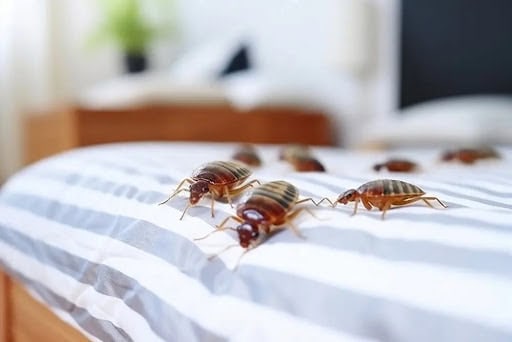
Bed bugs—the very mention of them is enough to make any homeowner uneasy. These tiny, elusive pests can invade even the cleanest of homes, causing itchy bites, restless nights, and a lot of frustration. But how can you keep your home pest-free while ensuring effective bed bug control? This guide covers proven methods to manage infestations and prevent future issues, giving you the tools and knowledge to protect your home and family.
Miami’s warm temperatures and bustling travel industry make the city more prone to bed bug infestations. Bed bugs thrive in heat, and with so many people traveling to and from the city, these pests can hitch rides on luggage, furniture, and even clothing.
Furthermore, as bed bugs are nocturnal and excellent at hiding in nooks and crannies, they can remain undetected until they’ve established a full infestation. If not effectively managed, the problem can worsen, affecting your quality of life and requiring costly interventions.
Spotting bed bugs early can save you a lot of trouble. Here are the key signs to watch out for in your Miami home:
Bed bug bites often appear as small, red welts on the skin, typically clustered in lines or groups. Bites may be itchy, but some individuals show no reaction at all.
Look for rust-colored spots on bedding, mattresses, or upholstery. These stains occur from crushed bed bugs or their excrement.
Bed bugs shed their exoskeletons as they grow. You might notice tiny, pale shells or eggs (about the size of a pinhead).
In severe infestations, an unpleasant, musty smell—caused by bed bugs’ scent glands—may be noticeable.
Lastly, you might spot one moving around areas where people sleep or relax. Adult bed bugs are about the size of an apple seed, reddish-brown, and oval-shaped.
Once you’ve identified a bed bug problem, it’s time to take action.
Essential oils like tea tree oil and lavender have some insecticidal properties, making them a mild deterrent. While not strong enough to eradicate infestations, they can complement other treatments.
Encasing mattresses and box springs in bedbug-proof covers traps existing bed bugs inside and prevents future infestations in those areas.
Effective bed bug control doesn’t stop at treatment—preventive measures are just as important. Incorporate these strategies into your routine to keep your home infestation-free:
Inspect your bedding, furniture, and luggage for signs of bed bugs, especially after traveling or hosting guests.
Be cautious with second-hand furniture. Inspect all items thoroughly before bringing them into your home.
Reducing clutter eliminates hiding spots for bed bugs and makes cleaning more efficient.
Wash bedding, curtains, and clothing in hot water and dry on high heat to remove ny hidden bugs.
When staying in hotels or vacation rentals, inspect the mattress seams and avoid placing luggage on the bed. After traveling, immediately launder and dry your clothing.
Dealing with a bed bug infestation can be stressful, but choosing the right treatment ensures your Miami home is protected. Effective bed bug control focuses on proven methods that eliminate infestations and provide long-term relief. Consult with a local pest control professional to ensure safe and thorough treatment tailored to your home and family’s needs.
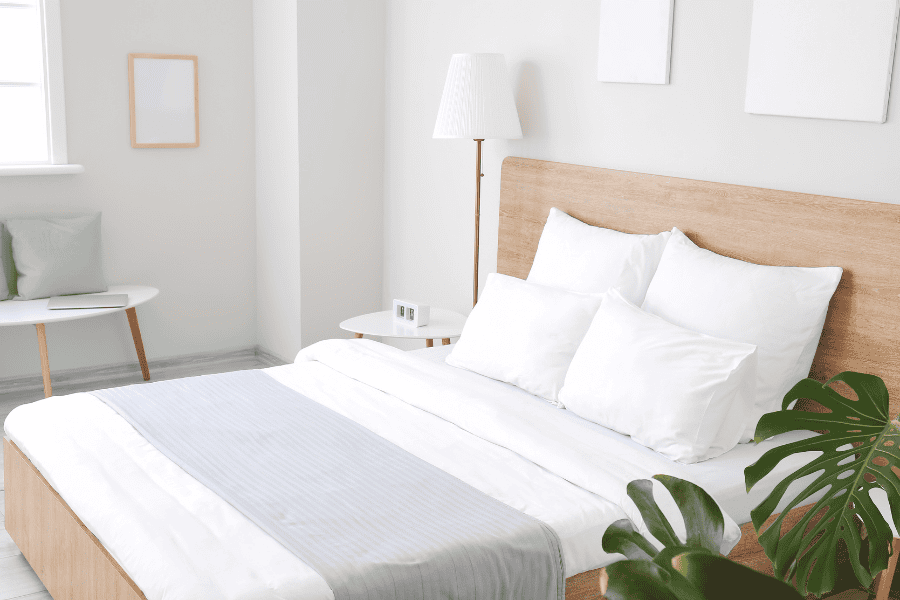
Traveling should be a relaxing and enjoyable experience, but nothing can ruin a trip faster than bringing home unwanted guests—bed bugs. These tiny pests are expert hitchhikers, and hotels, motels, and vacation rentals can sometimes harbor infestations. Knowing how to check for bed bugs in a hotel before settling in can save you from bites, discomfort, and the nightmare of an infestation at home.
In this guide, we’ll cover the common signs of bed bugs, how to prevent bed bugs while staying in a hotel, and what to do if you encounter bed bugs during your stay.
While bed bugs can be found in even the cleanest hotels, certain signs indicate their presence. Here’s what to look for when checking your hotel room:
Bed bugs hide in small cracks and crevices, with mattresses and box springs being some of their favorite hiding spots. Pull back the sheets and blankets and carefully inspect the seams, edges, and folds of the mattress.
Look for:
Bed bugs often hide in the crevices of headboards and bed frames. Use a flashlight to check along the seams and any cracks in the wood or upholstery.
Bed bugs don’t just hide in beds. Upholstered furniture like couches, chairs, and padded headboards can also harbor these pests. Look along seams, under cushions, and in any folds or tufts of fabric.
Before setting your bags down, inspect the luggage rack thoroughly. Bed bugs often hide in the cracks and crevices of wooden or fabric-covered luggage racks, waiting for the perfect opportunity to crawl into your suitcase.
If an infestation is severe, you might see rust-colored spots on the walls, curtains, or baseboards. Bed bugs can also hide behind picture frames, electrical outlets, and inside drawers.
Even if you don’t see immediate signs of bed bugs, taking precautions can help ensure you don’t bring them home. Follow these tips to prevent bed bugs when staying in a hotel:
Instead of placing your suitcase on the bed or floor, use a luggage rack or place your bag in the bathroom, where bed bugs are less likely to hide.
Bed bugs have an easier time clinging to fabric suitcases than hard-shell ones. If possible, opt for a hard-shell suitcase to reduce the chances of bed bugs hitching a ride home.
Keep your clothing in sealed plastic bags inside your suitcase. This makes it harder for bed bugs to get into your clothes and travel home with you.
Even if you didn’t see signs of bed bugs, wash all your clothes in hot water and dry them on high heat as soon as you return home. Heat is one of the best ways to kill bed bugs and their eggs.
Before storing your suitcase after a trip, vacuum it thoroughly to remove any hitchhiking bed bugs.
If you find signs of bed bugs in your hotel room, take action immediately:
Notify the front desk as soon as possible. Many hotels take bed bug complaints seriously and will offer a room change or refund.
If you’re given a new room, make sure it’s at least two floors away from the infested room. Bed bugs can travel through walls and vents, so a nearby room might also be affected.
Just because you switched rooms doesn’t mean you’re in the clear. Check for bed bugs again using the steps outlined above.
If you stayed in an infested room, take extra steps to prevent bringing bed bugs home:
If you accidentally bring bed bugs home, you need to act quickly. A bed bug infestation can spread rapidly, so professional treatment is often necessary.
Knowing how to check for bed bugs in a hotel can help prevent an infestation and keep your trip stress-free. By inspecting your room upon arrival, taking preventative measures, and acting quickly if you find bed bugs, you can reduce your risk of bringing these pests home.
If you suspect you have a bed bug infestation, don’t wait—contact a professional pest control company to safely and effectively kill bed bugs and prevent further issues.
Want to ensure your home stays bed bug-free? Contact a bed bug control company near you today for expert bed bug control solutions!
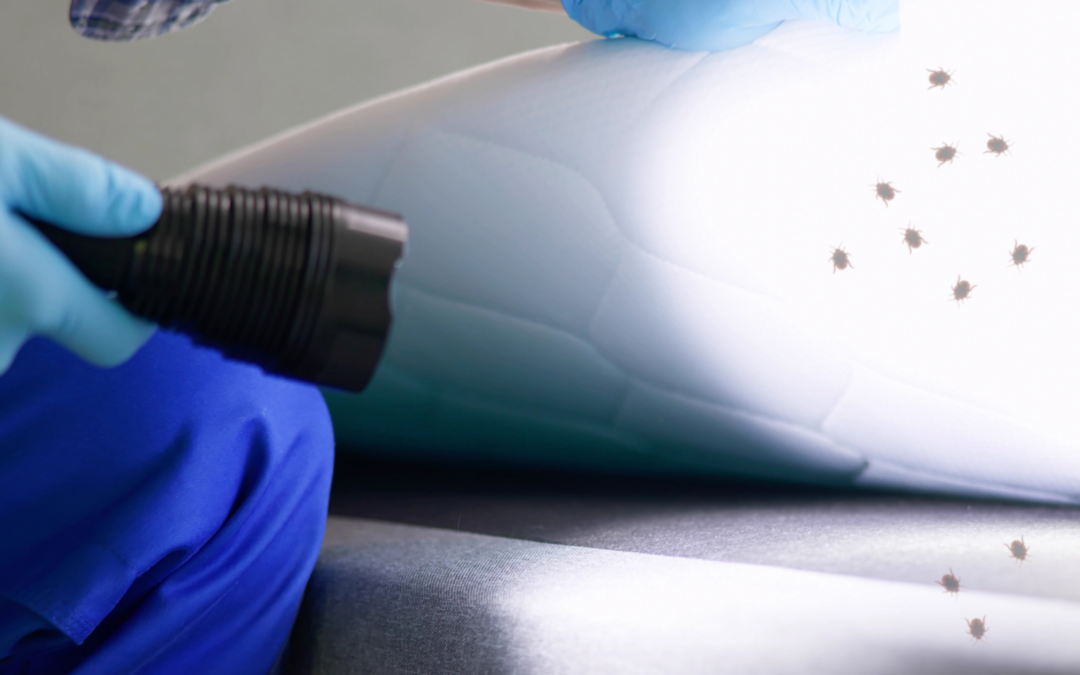
Bed bugs are a nightmare for homeowners, and their persistence requires thorough preparation before a bed bug treatment can be successful. These tiny pests can cause discomfort, disrupt sleep, and be notoriously difficult to eliminate. Knowing how to prepare for a professional bed bug treatment is essential to ensure these pests are eradicated from your home.
One of the first steps in addressing a potential bed bug problem is recognizing the signs of an infestation. These elusive pests are skilled at hiding, so you need to be vigilant. Here’s how to tell if you have bed bugs:
If you notice these signs, contacting a pest control company experienced in bed bug control is crucial to address the issue promptly.
Bed bugs are experts at hiding in small, dark spaces. They tend to stay close to their food source—humans—but can scatter throughout a home over time. Common hiding spots include:
Understanding these hiding places helps you prepare your home and target the infestation effectively.
Several treatment options are available for eradicating bed bugs, and the choice depends on the severity of the infestation. Here are the most common methods:
Heat treatment is one of the most effective methods to remove bed bugs. This involves raising the temperature of the affected area to levels lethal to bed bugs and their eggs, usually above 120°F. Heat treatment penetrates deep into furniture, walls, and other hard-to-reach areas.
Chemical treatments involve applying specialized insecticides to kill bed bugs. A pest control company will typically use a combination of sprays, dusts, and liquids to treat infested areas.
High-temperature steam can kill bed bugs on contact. This method is particularly effective for treating mattresses, furniture, and small cracks.
Mattress and box spring encasements trap bed bugs inside, preventing them from escaping and feeding. Sticky traps and interceptor cups can also help monitor and reduce bed bug populations.
Preparation is critical to ensuring the success of a bed bug treatment. Follow these steps to get your home ready:
Remove items like clothing, bedding, and personal belongings from infested areas. Keep clutter to a minimum to give pest control professionals easy access to treatment zones.
Vacuum carpets, rugs, furniture, and mattresses to remove as many bed bugs as possible. Pay extra attention to cracks, crevices, and seams. Dispose of the vacuum bag in a sealed plastic bag outside your home.
Separate heavily infested items that may need to be discarded. Consult your pest control professional to determine whether they can be treated or should be replaced.
Bed bugs can hide in cracks along baseboards and behind furniture. Move furniture at least two feet away from the walls to allow for thorough treatment.
Disassemble bed frames, remove drawers from dressers, and open up sofas to expose all possible hiding spots.
During treatment, keep pets in a safe area away from the treated zones. Remove houseplants as they might be affected by the chemicals or heat.
Provide details about the areas where bed bugs have been spotted and discuss any special considerations. Professional bed bug control companies can offer guidance on additional steps based on their treatment method.
After treatment, avoid bringing infested items back into your home. Inspect luggage, second-hand furniture, and clothing thoroughly before introducing them into your living space.
While DIY approaches might seem appealing, bed bug infestations are challenging to handle without professional help. A licensed pest control company has the tools, expertise, and treatments to eradicate bed bugs effectively and safely. They can identify the extent of the infestation, recommend the best treatment option, and help you implement prevention strategies to keep your home pest-free.
Once your home has been treated, taking preventive measures is crucial to avoid future infestations:
Preparing for a bed bug treatment is an essential step in effectively combating these persistent pests. By recognizing the signs of a bed bug infestation, understanding their hiding places, and following preparation guidelines, you can ensure the success of the treatment. Partnering with a professional pest control company in Georgia will give you peace of mind and help you treat your home with expert precision.
If you suspect bed bugs in your home, don’t wait—contact a trusted pest control company today to schedule a thorough inspection and treatment. With the right approach, you can reclaim your home and enjoy a bed bug-free environment.
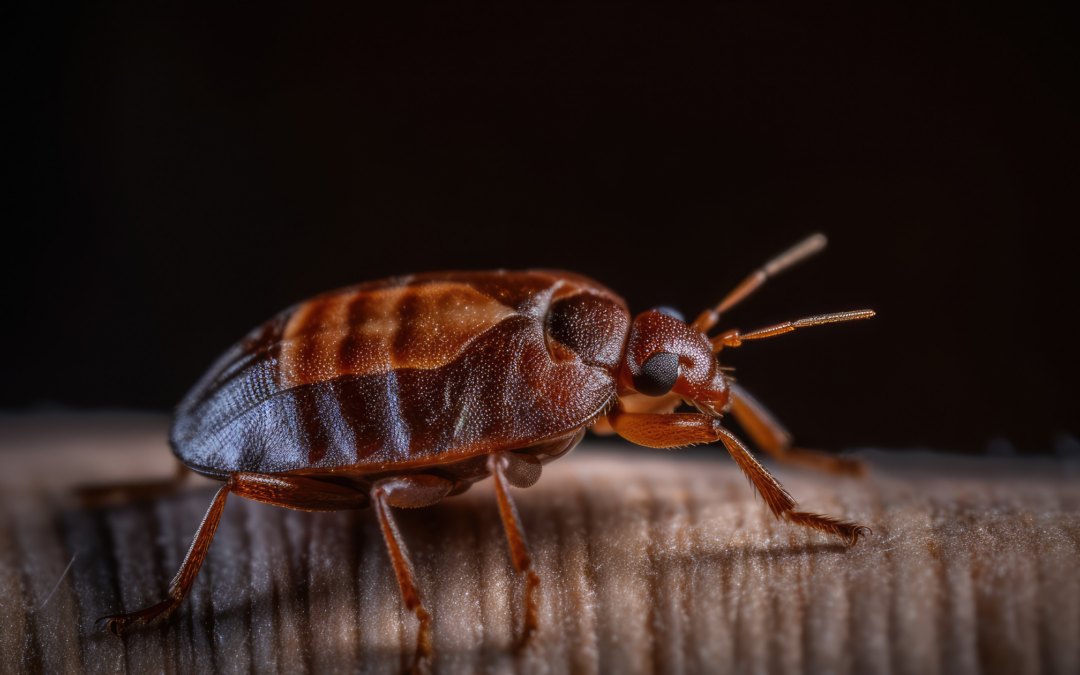
Bed bugs are small, elusive pests that can cause major problems for homeowners. A bed bug infestation can spread rapidly, creating discomfort and frustration. Early detection is critical to managing and eliminating these pests. But how do you know you have bed bugs? In this post, we’ll cover seven telltale signs of a bed bug infestation, where these pests are commonly found, how they spread, and tips on how to get rid of them.
One of the most obvious signs of a bed bug infestation is waking up with red, itchy bites on your skin. These bites often appear in a line or cluster and are typically found on areas exposed while sleeping, such as the arms, legs, neck, and face. But what do bed bug bites look like? They are small, red welts that can easily be mistaken for mosquito or flea bites. However, bed bug bites are unique because they often occur in a zigzag pattern. If you wake up with bites you didn’t have the night before, especially if they follow this pattern, it’s time to investigate further.
If you notice small blood stains on your sheets, mattress, or pillowcases, this could be another sign of bed bugs. These stains occur when a bed bug that has fed on your blood is crushed during sleep. The stains are usually small, rusty, or reddish marks. If you consistently find these stains, bed bugs may be lurking in your bedroom.
Bed bugs excrete dark, rusty-colored fecal spots that are often found on mattresses, box springs, bedding, and furniture. These spots are usually small but may appear in clusters. The easiest place to check for bed bug feces is around mattress seams, headboards, or other cracks and crevices in your furniture. The spots may smear if you rub them with a wet cloth, confirming that it’s bed bug waste.
As bed bugs grow, they shed their exoskeletons multiple times throughout their life cycle. These discarded skins are a clear indicator of an infestation. The skins are translucent, pale yellow, and may be found near hiding places such as mattress seams, headboards, or cracks in furniture. Finding shed skins is an important clue when learning how to identify bed bugs, as it proves that the pests are actively growing and reproducing.
Bed bugs lay tiny, white, oval-shaped eggs about 1mm in size. These eggs are sticky and often found in clusters in hidden areas, such as mattress seams, behind headboards, in cracks in furniture, and even under baseboards. The eggs and eggshells can be difficult to see without a close inspection, but if you spot them, it’s a clear sign that bed bugs are present and multiplying.
A bed bug infestation can also cause a distinct musty odor. Bed bugs produce pheromones that emit a sweet, unpleasant smell, which becomes more noticeable as the infestation grows. If your bedroom or other areas of your home have an unexplained odor, it’s a good idea to investigate for signs of bed bugs. This smell is particularly strong in heavily infested areas, so if you notice it, it’s likely that bed bugs have been present for some time.
Of course, spotting live bed bugs is a surefire sign of an infestation. Adult bed bugs are small, flat, and brownish-red. They are about the size of an apple seed (approximately 5-7 mm long). Bed bugs are nocturnal and tend to hide during the day, so they are often found in dark, secluded spots near sleeping areas. Common hiding spots include mattress seams, box springs, bed frames, headboards, and behind picture frames. You may also find them in cracks in furniture, behind wallpaper, or along baseboards. If you see a live bed bug, it’s time to act quickly to prevent the infestation from getting worse.
Bed bugs are primarily found in areas where people sleep, such as bedrooms and hotel rooms. They prefer to stay close to their food source (you!) and typically hide in mattresses, box springs, headboards, and bed frames. However, they can also infest couches, chairs, and other furniture in common areas.
Bed bugs are notorious hitchhikers and are spread mainly through human activity. They can travel from place to place in luggage, clothing, and used furniture. Hotels, public transportation, and secondhand stores are common places where bed bugs are picked up. Once inside your home, bed bugs can quickly move from room to room, infesting new areas. They can even crawl through wall voids and electrical outlets to spread throughout an apartment building or hotel.
Bed bugs are fast breeders. A small infestation can become a much larger problem in a matter of weeks. Female bed bugs lay about 5-7 eggs per day, which hatch in just 6-10 days. Within a month, the newly hatched bed bugs mature and begin reproducing, so within a few months, you could be dealing with a full-blown infestation.
If you discover a bed bug infestation, acting quickly is key to preventing it from worsening. Here are some steps to take:
Bed bugs are persistent pests, but early detection can help you manage and eliminate an infestation before it worsens. If you notice any of the signs mentioned above, it’s important to act quickly. Professional help from a bed bug control company can ensure the infestation is fully eradicated, giving you peace of mind and a bed bug-free home.
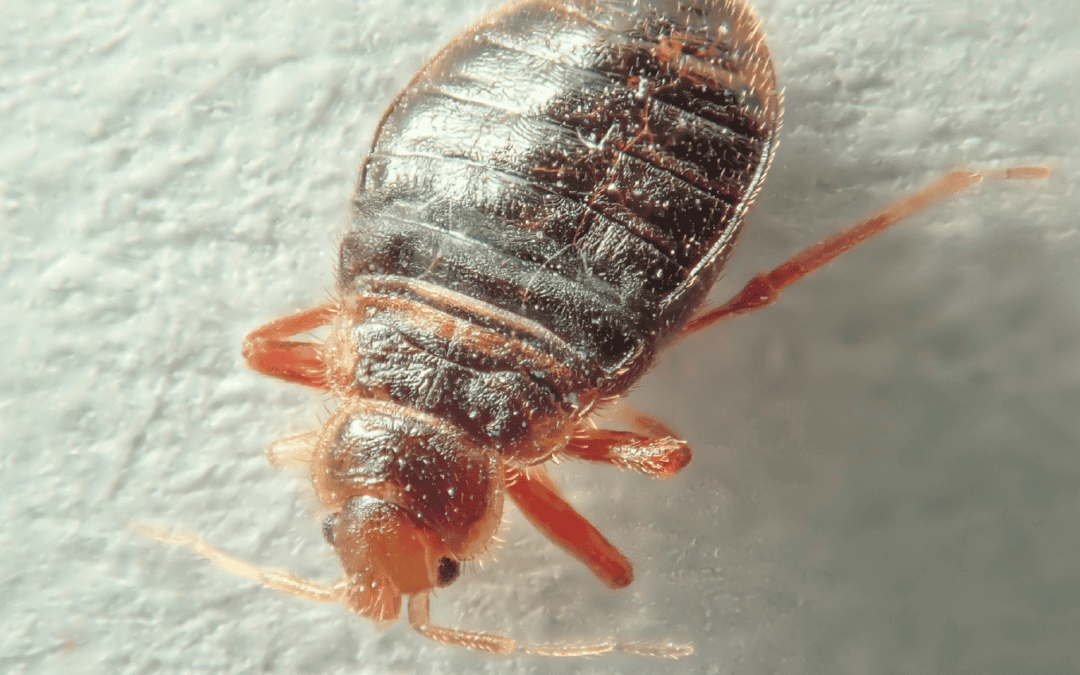
Bed bugs are a common nuisance in Georgia, affecting homes, hotels, and even public transportation. As a leading pest control company, we understand the frustration and discomfort these pests can cause. In this blog, we will explore effective bed bug treatment solutions, how to identify signs of bed bugs, recognize bed bug bites, and understand the various types of treatments available.
Before diving into treatment methods, it’s crucial to confirm if you have a bed bug infestation. Here are some key signs to look for:
Bed bug bites can be mistaken for other insect bites or skin conditions. Here’s how to differentiate them:
If you suspect bed bug bites, it’s essential to inspect your sleeping area for other signs of infestation.
Effective bed bug treatment requires a comprehensive approach. Here are some common methods:
When dealing with a bed bug infestation, it’s crucial to treat your home thoroughly. Here are steps to follow:
Once you’ve treated your home, preventing future infestations is key:
Dealing with a bed bug infestation can be stressful, but with the right approach, you can effectively eliminate these pests and prevent future problems. Understanding how to identify signs of bed bugs and recognizing bed bug bites are the first steps. Exploring various treatment methods, from chemical treatments to high heat solutions, will help you find the best approach for your situation.
Remember, hiring a professional pest control company is often the most efficient way to handle bed bug control. We are equipped with the knowledge and tools to treat your home safely and effectively, ensuring you can sleep soundly once again.
If you suspect a bed bug infestation, don’t hesitate to contact us. Our expert team is here to provide you with the best bed bug treatment solutions and restore your peace of mind.